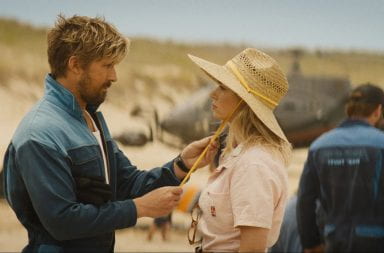Many Ohio State students do not start their academic career at OSU. In fact, more than 25 percent of the 2011 graduating class started their education elsewhere, according to admission statistics.
Incoming Autumn 2011 transfers totaled 2,428 students, but calculating course equivalents from semester universities and colleges to OSU’s quarter system is where it seems to get tricky for some.
Michele Molnar, a fourth-year in strategic communications, said the semester-to-quarter credit conversion caused her to lose a lot of credits and drop one of her majors.
Molnar transferred after spending one year at American University in Washington, D.C., where she was a political science major.
“I wish I would have known the exact number of credits I would lose and I wish I would have known that (OSU doesn’t) count classes lower than the 200-level for your major,” Molnar said.
After spending two semesters taking entry-level courses in the political science major at American University, Molnar said she wasn’t aware until paying full tuition and taking classes that many of her classes wouldn’t be considered credit at OSU.
“I ended up not double majoring in poli sci,” Molnar said. “I thought I would have a lot (of credits) but I didn’t have any. I’m barely going to graduate in the spring because of it.”
The quarter-to-quarter credit transfer seems to fare a lot better with students.
Kevin Patrick, a fourth-year in international studies security and intelligence said he only lost a few credits when transferring from the University of Cincinnati, also on the quarter system, last winter.
“I’ve had to take more (GEC) credits to catch up because (OSU requires) more,” Patrick said.
“The fact I already had friends up here (helped my transition) and they were kind of my segway,” Patrick said. “They helped me pick out my classes, so without them it would have been a lot worse.”
Rob Reed, admissions counselor in undergraduate admissions and First Year Experience, said in an email that credit is offered by multiplying the semester hour by 1.5 to get the equivalent hour on the quarter scale. When OSU switches to semesters, quarter hours from other universities will be multiplied by .67.
When students keep their syllabi from courses taken at another institution, Reed said advisers often look at the syllabus in order to determine the correct credit, otherwise credit will only be given as general credit.
From autumn 2011 undergraduate enrollment, about 6 percent of the 42,916 students were transfers, Reed said in the email.
Depending on the major, a transfer student will typically be given three options: direct enrollment into a program, a need to meet a specific GPA and class requirements, or applying for admission to their specified major. The enrollment criteria varies by major.
Reed said in the email that admissions for transfers as opposed to first-year admission is “more straight-forward.” Students earning 30 semester or 45 quarter credit hours will be looked at only by their college GPA, where a 2.5 or higher will make a student a good candidate. Students with lower GPA’s are still considered.
“Transfer students will have typically taken a lot of the general education courses,” Reed said in the email. “The largest strain on the academic system is with incoming freshmen who tend to all need to take the same classes.”
First Year Experience offers programs through its Transfer Students Activities Board to help transfer students transition. Luncheons and dinners are held where transfer students can meet and talk with other transfer students going through the same process.
Students who transfer but are still unsure of where to go in their academic careers might choose to enroll in the University Exploration Program, or EXP.
EXP works with students working on eligibility within their major, who want to explore different major options, or who need particular GPA’s or prerequisite coursework.
Twenty-two percent of incoming transfer students were admitted to the EXP program, Amy Treboni, administrative director for university exploration, said.
“One thing OSU has is a lot of majors,” Treboni said. “It can be hard to identify the major that’s the best fit for you.”
EXP also focuses on helping undecided students choose classes that a majority of majors require.
“Transfer students are different,” Treboni said. “They already have college experience.”
Megan Gridley, a third-year in exploration, transferred to OSU after two years at Virginia Tech.
She said she enrolled in exploration because she was unsure of her major choice.
“I was engineering (at Virginia Tech), but I don’t like it,” Gridley said. “My problem is I just don’t know what I’d do instead.”
Her decision to transfer after two years stemmed mainly from location.
“I live (in Pickerington, Ohio) and I didn’t like living in two states,” Gridley said. “I like that (Ohio State) is bigger.”


